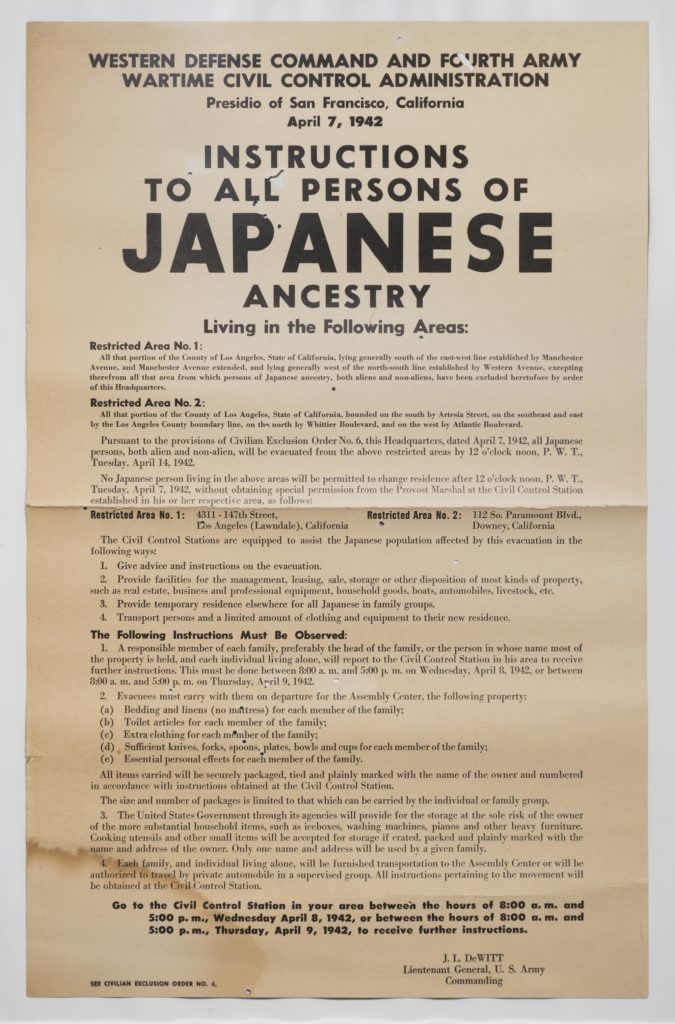What does an American look like? Who is welcome in this country? What is every American’s duty in the face of racist government action?
Alphawood Gallery has partnered with the Japanese American Service Committee (JASC) to produce the Gallery’s first original exhibition, Then They Came for Me: Incarceration of Japanese Americans during WWII and the Demise of Civil Liberties. This exhibition examines a dark episode in U.S. history when, in the name of national security, the government incarcerated 120,000 citizens and legal residents during World War II without due process or other constitutional protections to which they were entitled. Executive Order 9066, signed by President Franklin D. Roosevelt on February 19, 1942, set in motion the forced removal and imprisonment of all people of Japanese ancestry living on or near the West Coast. During this 75th anniversary year of the executive order, we look back at this shameful past to learn lessons for our present and future in the face of new challenges encouraged by fearmongering and racism at the highest levels of government.
Then They Came for Me presents this historical event from multiple perspectives. Drawing upon the powerful images culled from the book Un-American: The Incarceration of Japanese Americans During World War II by Chicago-based photo historians Richard Cahan and Michael Williams, the exhibition features works by renowned American photographers Dorothea Lange, Ansel Adams and others documenting the eviction of Japanese Americans from their homes and their subsequent lives in incarceration camps. These photographers were hired by the U.S. Government’s War Relocation Authority (WRA) to record the “evacuation” and “internment” process. In addition to the WRA photographers, the exhibition presents views of the incarceration by Japanese American artists Toyo Miyatake and Miné Okubo. A significant group of images by Miyatake, a professional photographer who was incarcerated at the Manzanar Relocation Center, reveal details of the camps prohibited in WRA photography such as barbed wire and guard towers, and are shown alongside his illuminating images of the imprisoned residents’ daily lives. And pages from Miné Okubo’s remarkable illustrated memoir Citizen 13660 document her own incarceration experience with poignant drawings and forthright text.
The JASC and a number of collectors from the Chicago area have generously lent art, objects, documents and other historical materials that provide glimpses into the personal experiences of those who were incarcerated. Highlights include ID cards and tags, anti-Japanese propaganda, suitcases, diaries, handmade furniture, wood carvings and other works of art, high school yearbooks and newsletters produced by camp inmates, military accoutrements, indefinite leave clearances, materials related to resettlement in Chicago and eventual redress and reparation. Specially compiled video testimonies by former inmates, their family members and community leaders are installed throughout the exhibition. And the new documentary film And Then They Came for Us by Abby Ginzberg and Ken Schneider, screened daily, makes explicit connections between the Japanese American incarceration story and current concerns with regard to the treatment of Muslims and Muslim Americans.
Alphawood Gallery is Closed.
Then They Came for Me will be presented at the International Center of Photography in New York from January 26 through May 6, 2018.
Then They Came for Me Installation Images
 Then They Came for Me, Alphawood Gallery, 2017. Photo by James Prinz.
Then They Came for Me, Alphawood Gallery, 2017. Photo by James Prinz.
 Then They Came for Me, Alphawood Gallery, 2017. Photo by James Prinz.
Then They Came for Me, Alphawood Gallery, 2017. Photo by James Prinz.
 Then They Came for Me, Alphawood Gallery, 2017. Photo by James Prinz.
Then They Came for Me, Alphawood Gallery, 2017. Photo by James Prinz.
 Then They Came for Me, Alphawood Gallery, 2017. Photo by James Prinz.
Then They Came for Me, Alphawood Gallery, 2017. Photo by James Prinz.
 Then They Came for Me, Alphawood Gallery, 2017. Photo by James Prinz.
Then They Came for Me, Alphawood Gallery, 2017. Photo by James Prinz.
 Then They Came for Me, Alphawood Gallery, 2017. Photo by James Prinz.
Then They Came for Me, Alphawood Gallery, 2017. Photo by James Prinz.
 Then They Came for Me, Alphawood Gallery, 2017. Photo by James Prinz.
Then They Came for Me, Alphawood Gallery, 2017. Photo by James Prinz.
 Then They Came for Me, Alphawood Gallery, 2017. Photo by James Prinz.
Then They Came for Me, Alphawood Gallery, 2017. Photo by James Prinz.
 Then They Came for Me, Alphawood Gallery, 2017. Photo by James Prinz.
Then They Came for Me, Alphawood Gallery, 2017. Photo by James Prinz.
 Then They Came for Me, Alphawood Gallery, 2017. Photo by James Prinz.
Then They Came for Me, Alphawood Gallery, 2017. Photo by James Prinz.
 Then They Came for Me, Alphawood Gallery, 2017. Photo by James Prinz.
Then They Came for Me, Alphawood Gallery, 2017. Photo by James Prinz.
 Then They Came for Me, Alphawood Gallery, 2017. Photo by James Prinz.
Then They Came for Me, Alphawood Gallery, 2017. Photo by James Prinz.
 Then They Came for Me, Alphawood Gallery, 2017. Photo by James Prinz.
Then They Came for Me, Alphawood Gallery, 2017. Photo by James Prinz.
 Then They Came for Me, Alphawood Gallery, 2017. Photo by James Prinz.
Then They Came for Me, Alphawood Gallery, 2017. Photo by James Prinz.
 Then They Came for Me, Alphawood Gallery, 2017. Photo by James Prinz.
Then They Came for Me, Alphawood Gallery, 2017. Photo by James Prinz.
 Then They Came for Me, Alphawood Gallery, 2017. Photo by James Prinz.
Then They Came for Me, Alphawood Gallery, 2017. Photo by James Prinz.
 Then They Came for Me, Alphawood Gallery, 2017. Photo by James Prinz.
Then They Came for Me, Alphawood Gallery, 2017. Photo by James Prinz.
 Then They Came for Me, Alphawood Gallery, 2017. Photo by James Prinz.
Then They Came for Me, Alphawood Gallery, 2017. Photo by James Prinz.
 Then They Came for Me, Alphawood Gallery, 2017. Photo by James Prinz.
Then They Came for Me, Alphawood Gallery, 2017. Photo by James Prinz.
 Then They Came for Me, Alphawood Gallery, 2017. Photo by James Prinz.
Then They Came for Me, Alphawood Gallery, 2017. Photo by James Prinz.
 Then They Came for Me, Alphawood Gallery, 2017. Photo by James Prinz.
Then They Came for Me, Alphawood Gallery, 2017. Photo by James Prinz.
 Then They Came for Me, Alphawood Gallery, 2017. Photo by James Prinz.
Then They Came for Me, Alphawood Gallery, 2017. Photo by James Prinz.
 Then They Came for Me, Alphawood Gallery, 2017. Photo by James Prinz.
Then They Came for Me, Alphawood Gallery, 2017. Photo by James Prinz.
 Then They Came for Me, Alphawood Gallery, 2017. Photo by James Prinz.
Then They Came for Me, Alphawood Gallery, 2017. Photo by James Prinz.
 Then They Came for Me, Alphawood Gallery, 2017. Photo by James Prinz.
Then They Came for Me, Alphawood Gallery, 2017. Photo by James Prinz.
 Then They Came for Me, Alphawood Gallery, 2017. Photo by James Prinz.
Then They Came for Me, Alphawood Gallery, 2017. Photo by James Prinz.
 Then They Came for Me, Alphawood Gallery, 2017. Photo by James Prinz.
Then They Came for Me, Alphawood Gallery, 2017. Photo by James Prinz.
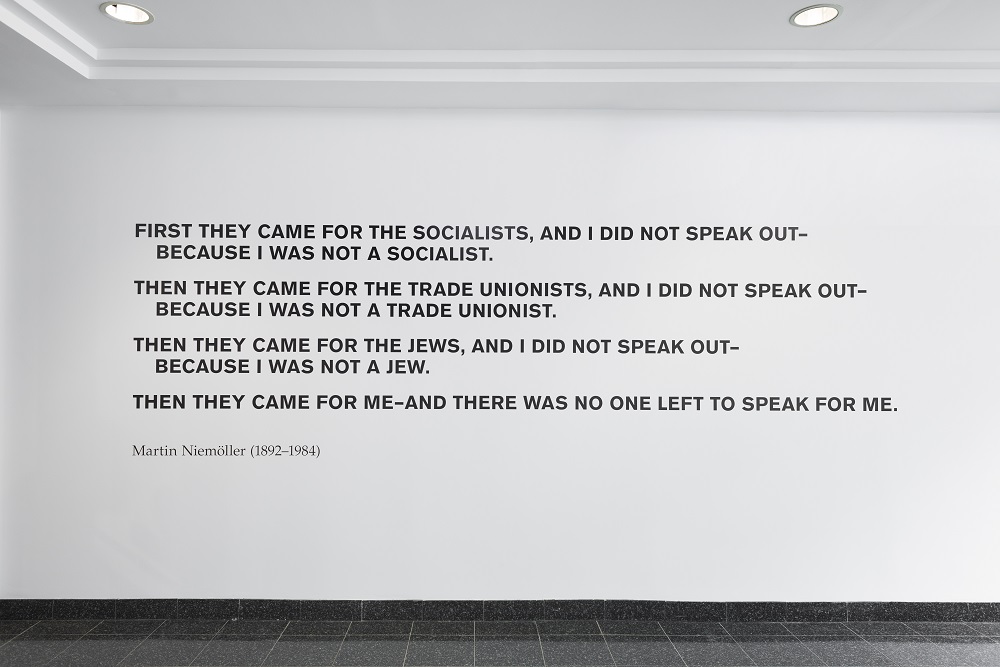 Then They Came for Me, Alphawood Gallery, 2017. Photo by James Prinz.
Then They Came for Me, Alphawood Gallery, 2017. Photo by James Prinz.
Curatorial Committee
Staci Boris
Associate Director of Exhibitions, Alphawood Gallery
Richard Cahan
Photo historian and co-author of the book Un-American: The Incarceration of Japanese Americans During World War II
Claire Fey
Gallery Manager and Curatorial Assistant, Alphawood Gallery
Anthony Hirschel
Director of Exhibitions, Alphawood Gallery
Karen Kanemoto
Executive Director of the Japanese Mutual Aid Society of Chicago
Jane Kenamore
Consulting Archivist for the Legacy Center Archives, Japanese American Service Committee
Jean Mishima
President, Chicago Japanese American Historical Society
Megan Moran
Education Coordinator, Alphawood Gallery
Anna Takada
Outreach Coordinator and Exhibition Assistant, Alphawood Gallery
Joseph Varisco
Program Manager, Alphawood Gallery
Roy Wesley (Uyesugi)
Author, cell biologist, COO Fermalogic, Inc. who was incarcerated at Minidoka
Michael Williams
Photo historian and co-author of the book Un-American: The Incarceration of Japanese Americans During World War II
Ryan Masaaki Yokota
Legacy Center Manager, Japanese American Service Committee
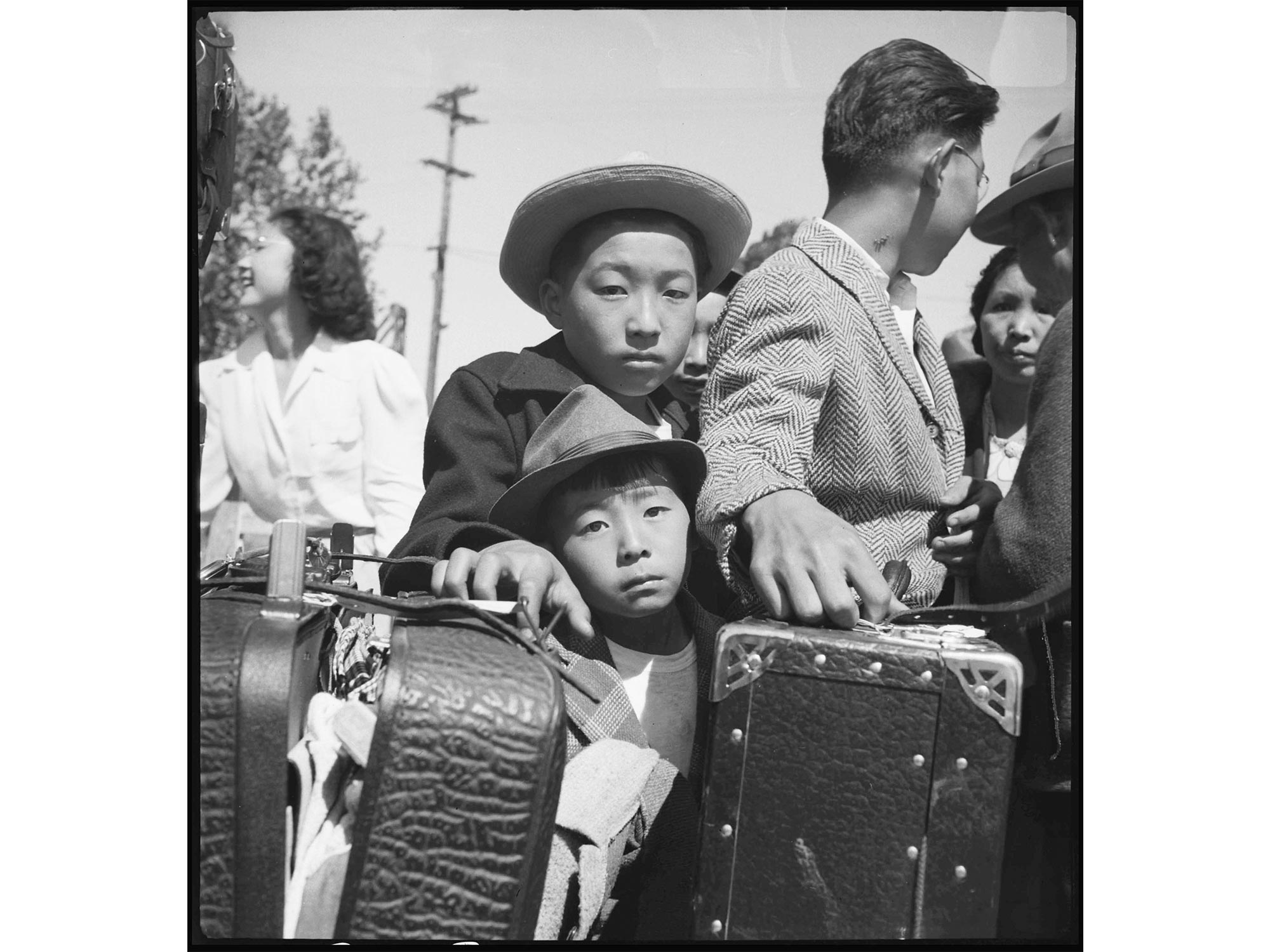
Dorothea Lange, Turlock, California, May 2, 1942. National Archives.
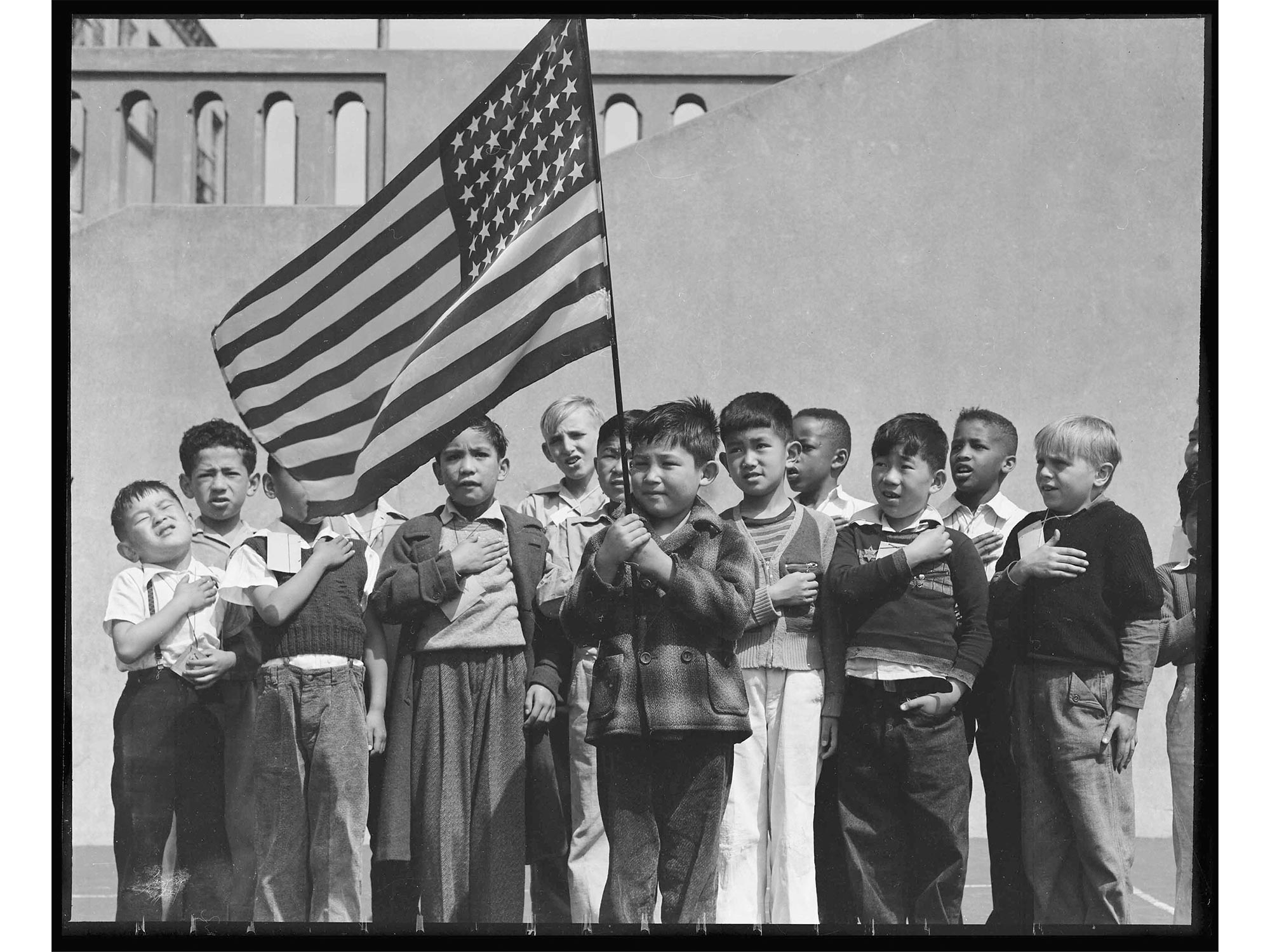
Dorothea Lange, San Francisco, California, April 20, 1942. National Archives.
“Instructions to All Persons of Japanese Ancestry” Poster, 1942. Courtesy Stanley Oda. Photo by James Prinz.

Dorothea Lange, Hayward, California, May 9, 1942. National Archives.

Clem Albers, Owens Valley, California, April 2, 1942. National Archives.
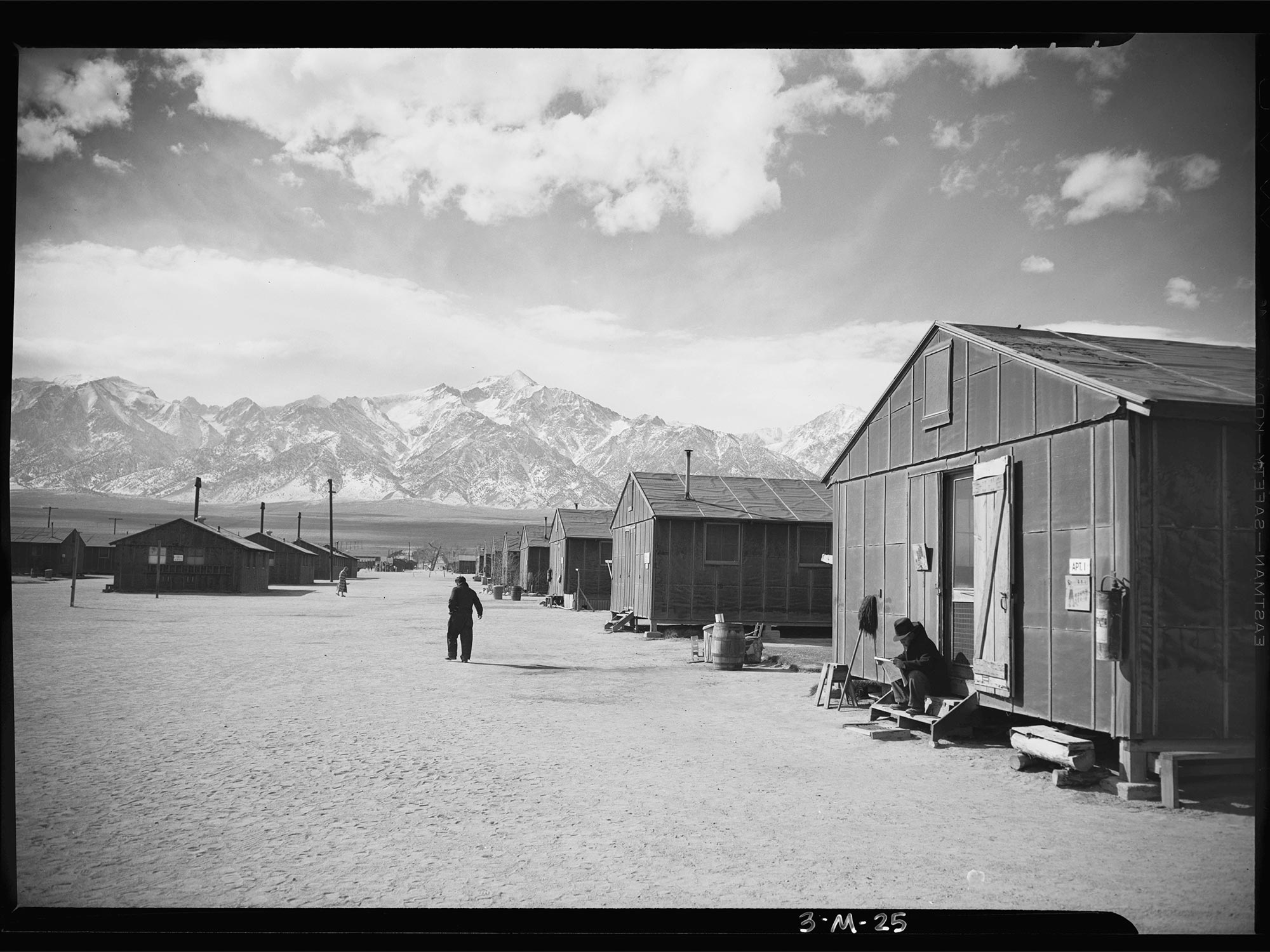
Ansel Adams, Manzanar Relocation Center, California. Library of Congress.
Map of the Camps in Then They Came for Me, Alphawood Gallery, 2017. Photo by James Prinz.

Dorothea Lange, Centerville, California, May 9, 1942. National Archives.

Clem Albers, Arcadia, California, April 6, 1942. National Archives.
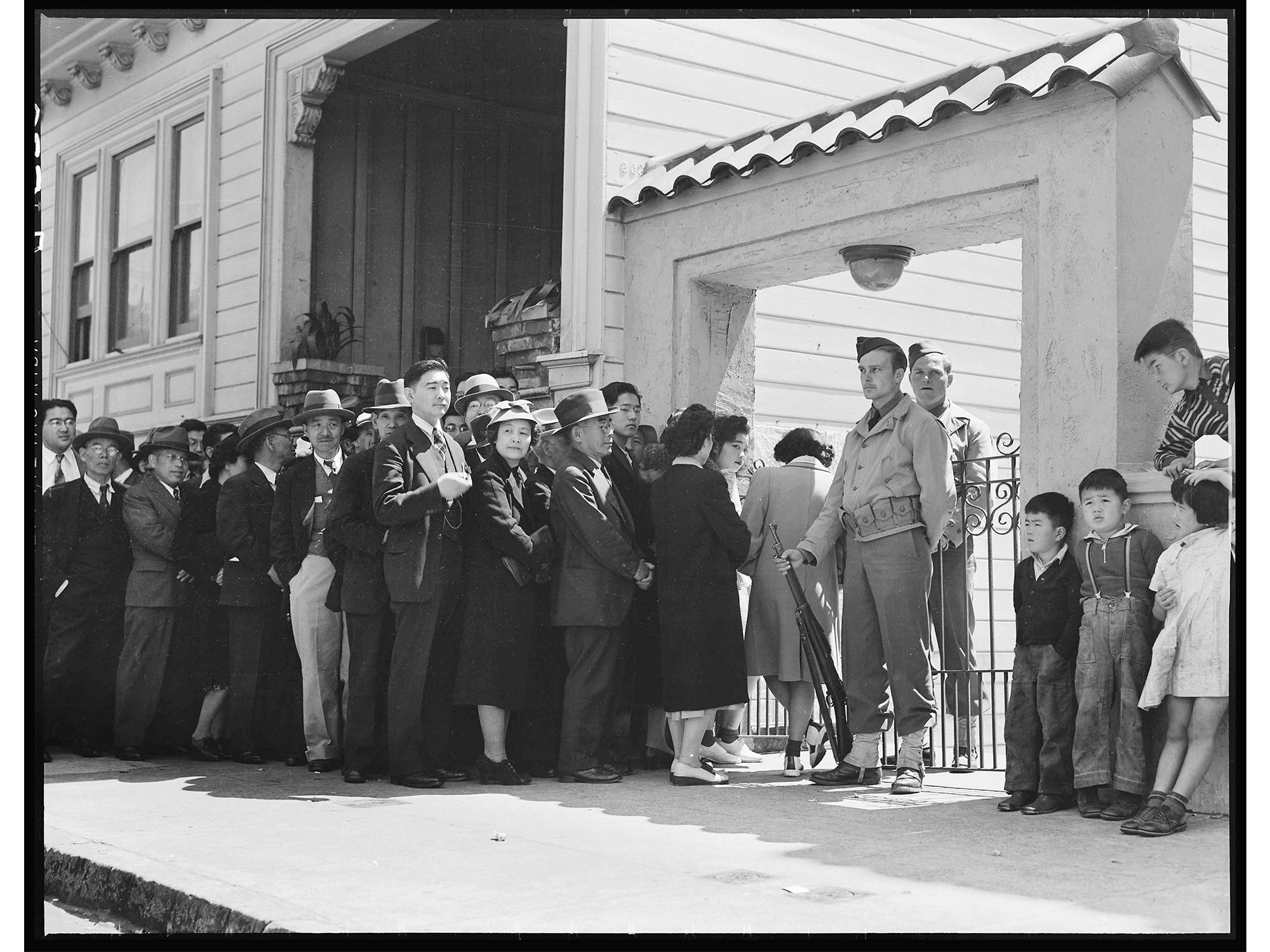
Dorothea Lange, San Francisco, California, April 25, 1942. National Archives.

Clem Albers, San Pedro, California, April 5, 1942. National Archives.
Then They Came for Me at Alphawood Gallery, 2017. Photo by James Prinz.
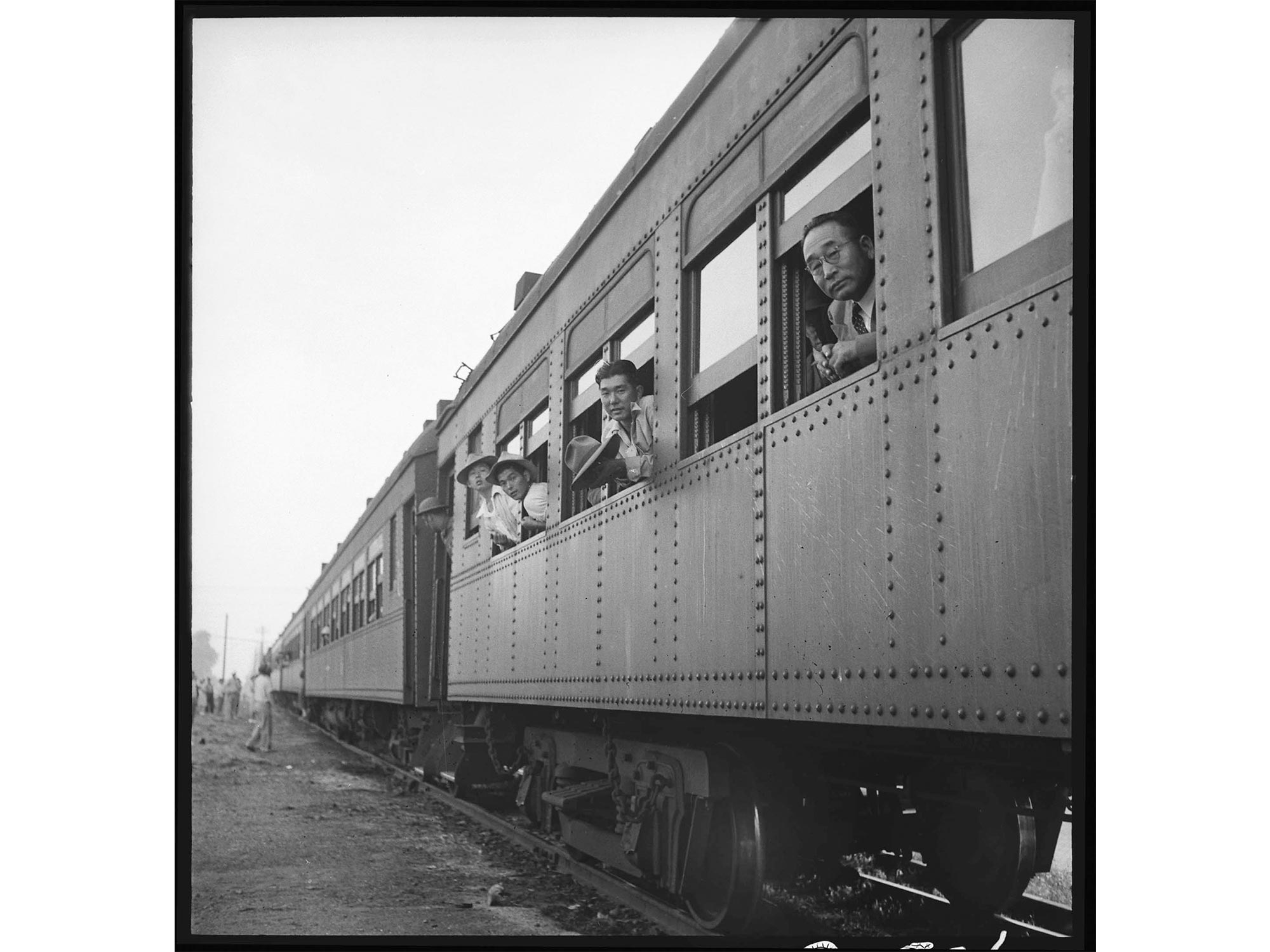
Dorothea Lange, Woodland, California, May 20, 1942. National Archives.
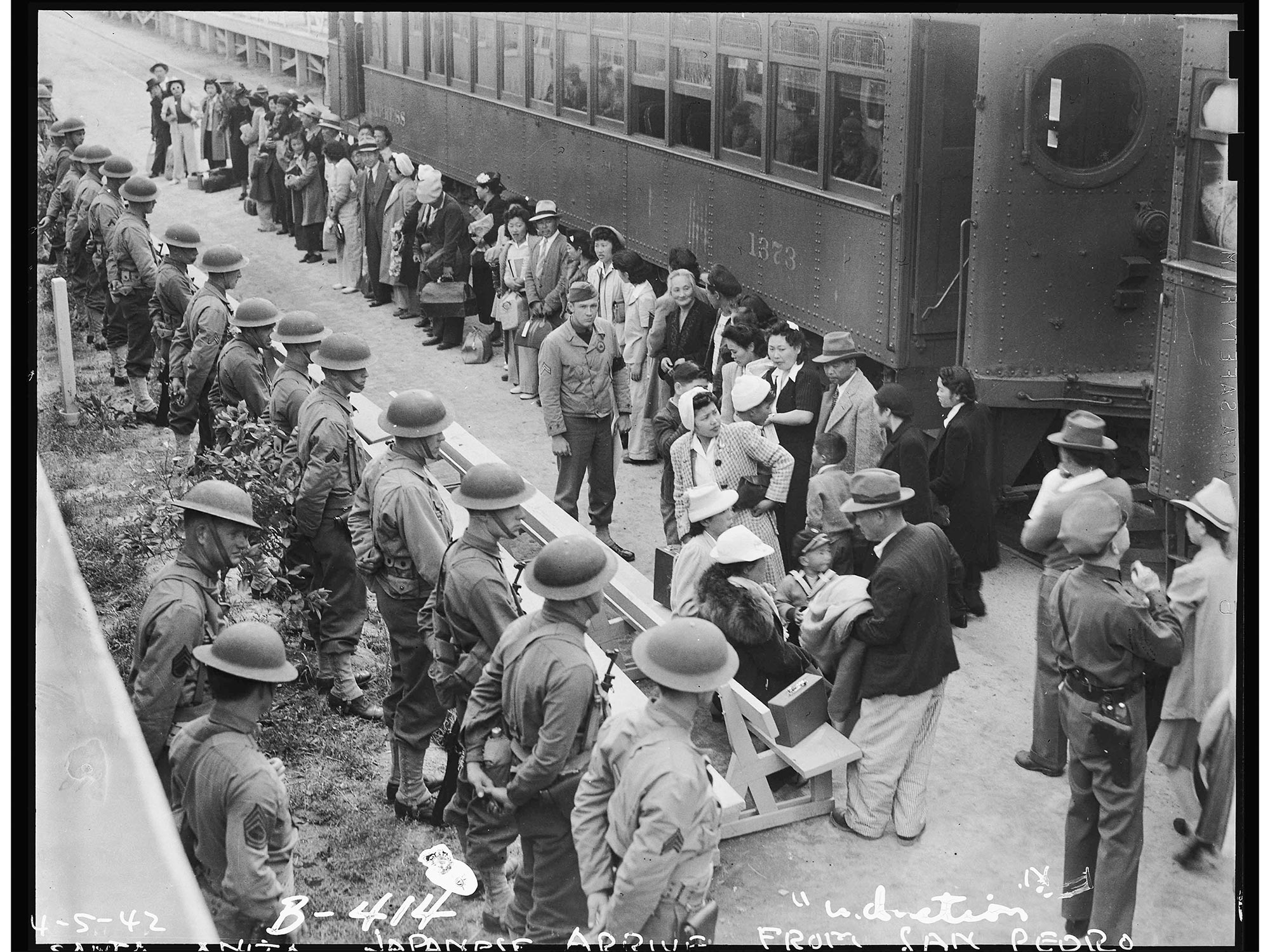
Clem Albers, Arcadia, California, April 5, 1942. National Archives.

Dorothea Lange, Oakland, California, March 13, 1942. National Archives.
Alien Registration Identification Card for Tadaaki Okubo, 1942. JASC, Okubo Family Papers. Photo by James Prinz.
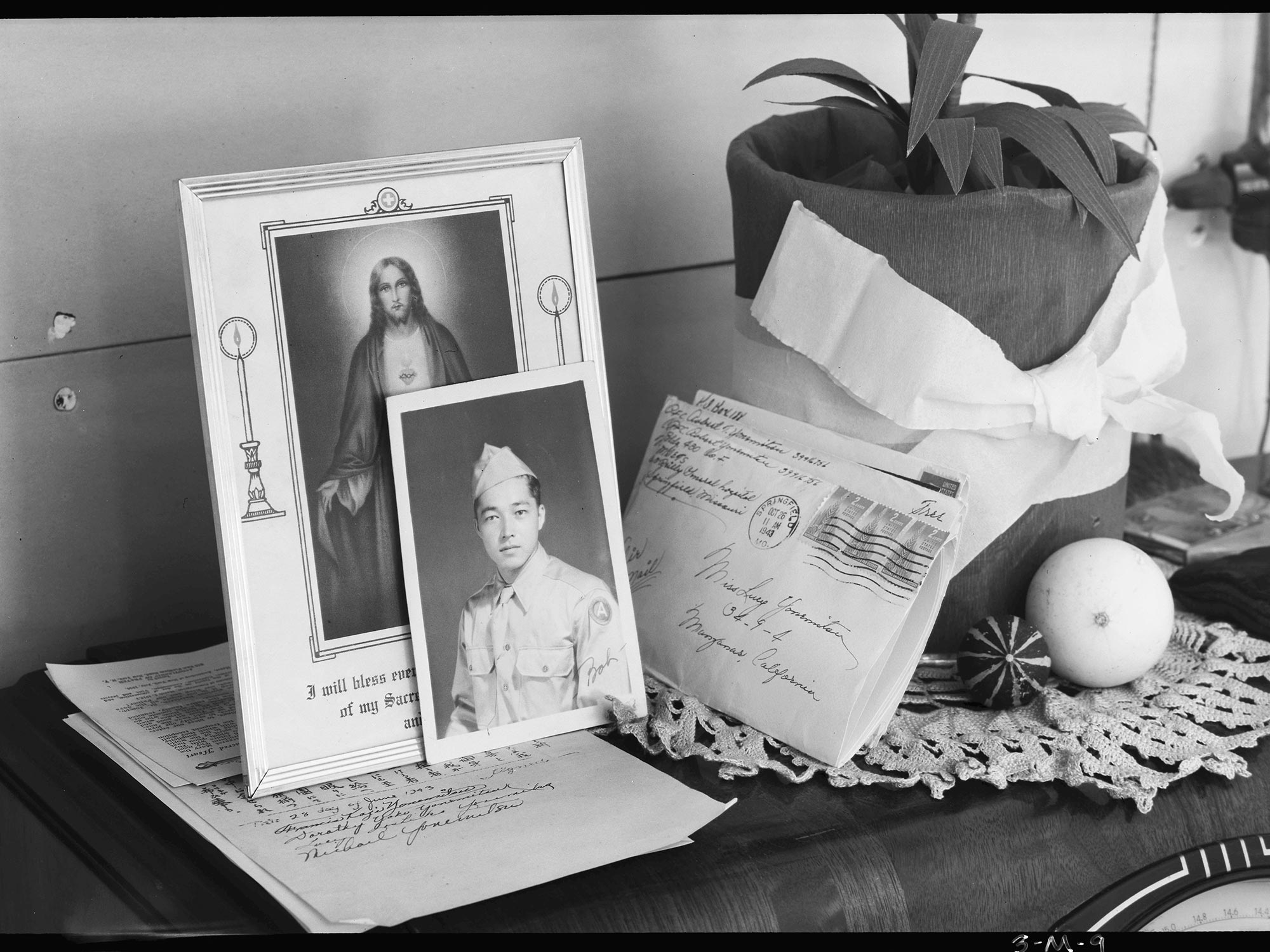
Ansel Adams, Owens Valley, California 1943. Library of Congress.
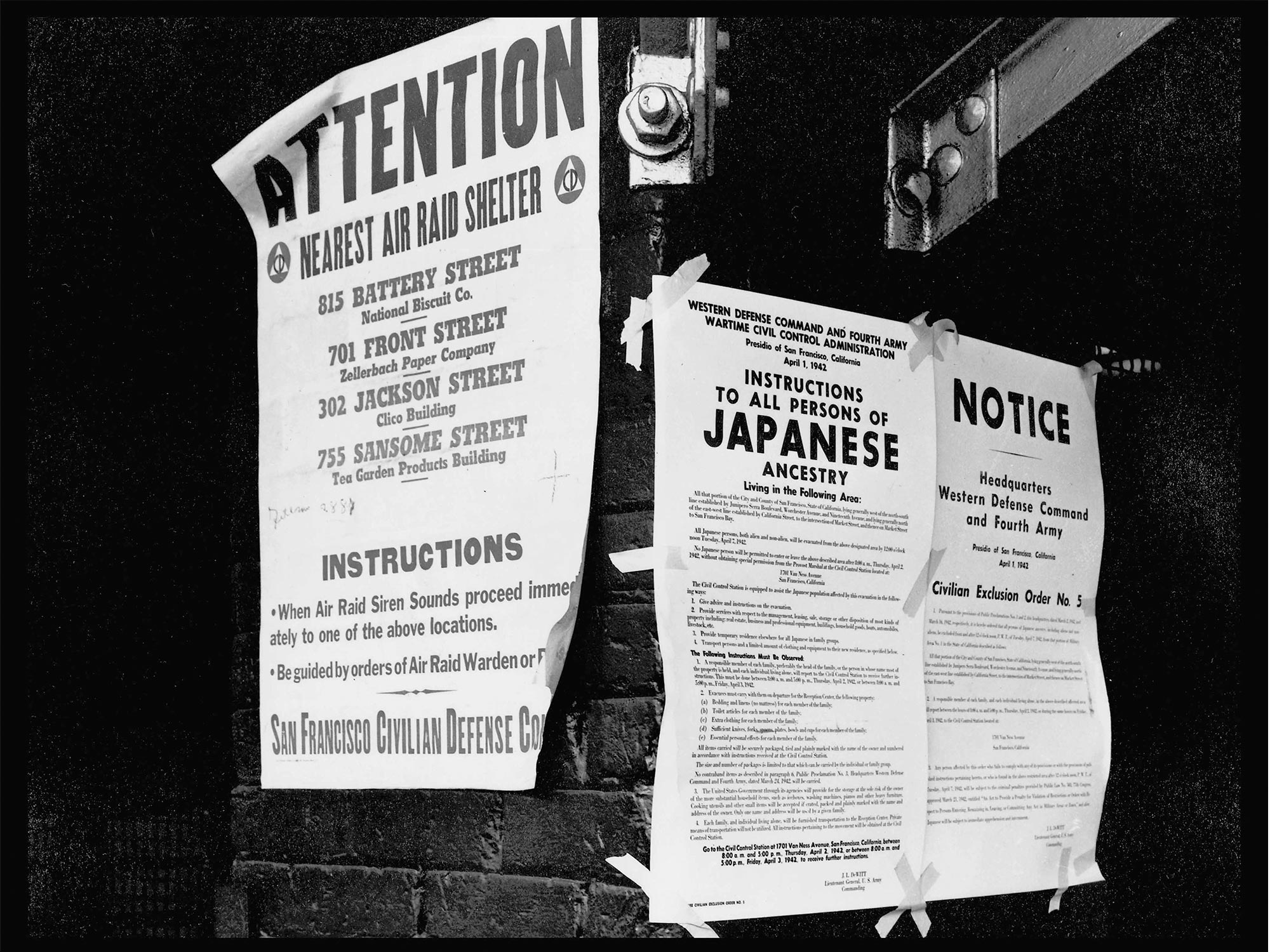
Dorothea Lange, San Francisco, California, April 11, 1942. National Archives.

Ansel Adams, Manzanar Relocation Center, California, 1943-1944. Library of Congress.

Ansel Adams, Manzanar Relocation Center, California, 1943-1944. Library of Congress.
Oral History Studio
The Oral History Studio is a private space within the gallery where visitors are invited to record their personal stories or reflections. An Alphawood Gallery staff member is available to interview visitors who are willing to share their histories and thoughts related to the themes and questions posed by Then They Came for Me. Equipped with state-of-the-art audio and video recording equipment, the studio is available by walk-in (during scheduled hours) or by appointment.
Learn MorePast Exhibition
December 1, 2016 – April 2, 2017
Art AIDS America
This groundbreaking exhibition underscored the deep and unforgettable presence of HIV in American art. It introduced and explored the whole spectrum of artistic responses to AIDS, from the politically outspoken to the quietly mournful, surveying works from the early 1980s to the present.
Learn More


